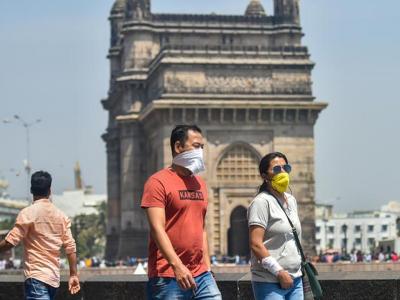People over 6ft have double the risk of Coronavirus
By Lokmat English Desk | Published: July 29, 2020 03:17 PM2020-07-29T15:17:46+5:302020-07-29T15:17:46+5:30

Tall people could face a greater risk of getting Covid-19, according to research that adds weight to the theory the disease is airborne.

Data from 2,000 people in the UK and US showed men above 6ft were twice as likely to be diagnosed with the coronavirus. Women also had higher odds if they were over 6ft tall. But there were so few in the study, the results are not reliable.

The researchers said the findings do not necessarily mean tall people are somehow genetically more vulnerable to the infection. Instead, the team believe the results indicate Covid-19 spreads through tiny particles called aerosols that linger in the air after being exhaled.

Scientists said taller people would be at no more risk if the virus was mainly spread through sneezing or coughing, which produce larger droplets that fall to the ground quickly.

Health officials have so far ruled out that Covid-19 is airborne. But admitted recently they are reviewing 'emerging evidence' that it is.The average man in England was 5ft 9" (175.3cm) and the average woman was 5ft 3" (161.6cm) in 2010, according to official data. The survey results were analysed by a team of data scientists in the UK, Norway and the US, led by experts at the University of Oxford.

The study looked at a range of personal and work-related factors that may affect the risk of infection with SARS-Cov-2, the virus which causes Covid-19. Respondents were asked about their employment status, income, how they travel to work, if they live with other people and if they socialised a lot among other factors.

Of the 2,000 people surveyed including 1,000 in the UK and 1,000 in the US, 339 people were over six feet tall. Analysis that has yet to be scrutinised by fellow scientists showed taller people were more likely to be diagnosed with Covid-19. In the UK, men and women faced more than double the risk of Covid-19 compared to those under six feet.

The odds were slightly lower in the US for men but extremely high for women — who were more than nine times more likely to get the virus. But because there were such a tiny proportion of women over six feet in the data, the researchers did not say the finding was significant.

The link between height and Covid-19 was only seen in the UK, and the researchers did not offer an explanation for this. It may be explained by other factors such as larger men working in construction, where they may be at greater risk.

Height has previously been linked to the development of diseases such as dementia and an irregular heart beat, which scientists believe could be due to genetic variants or growth hormones. But in this study, the researchers did not suggest tall people were more at risk of Covid-19 due to their biology.

The findings support the theory that tiny coronavirus particles emitted through exhaling and speaking may linger in the air for hours. World Health Organization scientists earlier this month admitted there is 'evidence emerging' that the coronavirus can be spread through the air.

The UN agency previously said the virus spreads primarily through droplets expelled from the nose and mouth of an infected person. These quickly sink to the ground but can land in the nose or mouth of other people close by. They also land on surfaces, where the virus can be picked up.

But there have been calls for the WHO to update its guidance to warn the infection can linger in the air and be inhaled by others.Airborne transmission means a virus can be spread in aerosols — droplets so small that they can float in the air after being exhaled.Experts said taller people wouldn't be at any higher risk if transmission was mainly through droplets — but because they are taller they may be exposed to more of the particles, the team hypothesized. The paper which has not yet been published in a medical journal said: 'If large downward falling droplets were more significant, then taller people might be expected to be less at risk.' The one to two metre social distancing rule is based on the fact droplets do not carry through the air.























